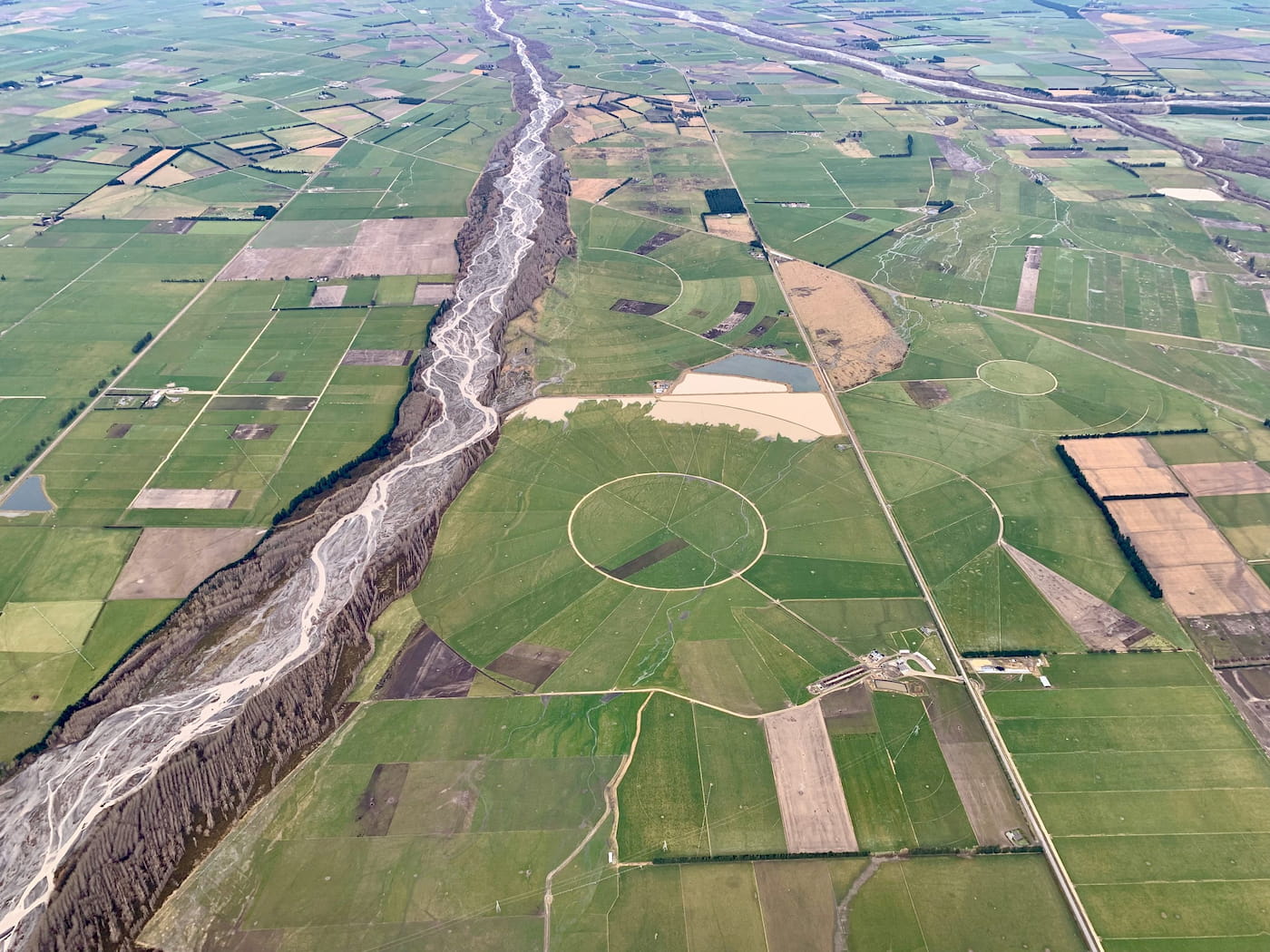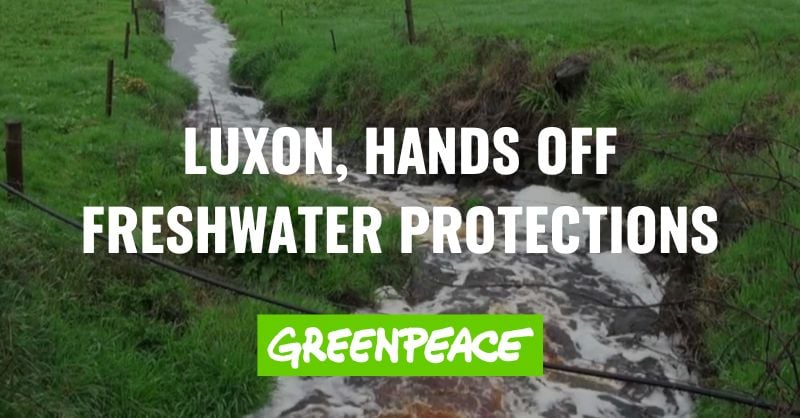You’ve got to feel sorry for the dairy leadership. Well you do. They’re in mourning. Grief is the only way to explain the strange and conflicting messages coming out of DairyNZ and the Federated Farmers over the last six months. Could have been the demise of John Clarke or Murray Ball. More likely to be a sadness brought on by the slow death of public confidence in their industry.
Dairy is under the gun, even from farming’s allies at the National Party.
Their nadir: What’s coming to be known as the “water crisis of ’17” Perhaps they thought this pesky row would blow over and their PR machine could get back to writing press releases about milk solids and the Dairy Woman of the Year. But no. Freshwater has turned into a huge and potentially election-losing issue. So dairy is under the gun, even from farming’s allies at the National Party.
The reaction to this threat? Threats to punch MP’s, a boycott on sponsors of a prime time current affairs show they didn’t like, and the debacle over a Greenpeace swimmable rivers ad. All and all, the dairy leadership’s performance could best be described as a maul rolling backwards behind their own tryline. They haven’t done themselves or their constituents any favours. Especially the farmers saddled with increasing levels of debt working to improve the environment. As Dipton farmer Peter McDonald says : “Our farming leaders strategy of denial and defence is failing.”This is what failure looks like: An anonymous Fed Farmers opinion article supplied to the New Zealand Herald website last month. Entitled “Damn lies and alternative facts”, it contains an incitement to “uppercut” any MP who supported an international report on the environment and farming, a document which should be “ignored” because it was written by “pommy” economists. Tremendous. Violence and racism in the same document. Very alt-right. It must be the grief talking.
Counsellors will tell you that acceptance is the last stage of the grieving process. There are four other emotional stops on the way. Denial, anger, bargaining and depression. We’ve seen stunning examples of each of these since the crisis began in December last year.First it was denial. How else would you describe the idea of leaders urging dairy farmers to film themselves drinking from their own stream water and post it on social media to prove that everything was fine? Considering the cascade of reports about the state of New Zealand’s waterways that followed, it now seems delightfully naive and somewhat foolhardy.Denial too, when Greenpeace ran controversial ads about the swimability or otherwise of our rivers.
“It’s hard not to get upset when you hear things such as rivers being ‘unsafe for swimming’, said James Stewart from Federated Farmers. “The sad thing for me though, is that these messages aren’t being fully transparent and honest.” DairyNZ complained to the Advertising Standards Authority. They lost. The ASA found the advertisement was correct. Sixty-two percent of monitored rivers were in fact unsafe to swim in. Prompting difficult headlines like: “Greenpeace trumps dairy industry”.
Step one to getting Dairy’s social licence back must surely be working themselves out of that depressive back paddock to a place of acceptance
Then the dairy leadership moved on a stage and hit the angry button. “Dairy NZ furious”: CEO Tim Mackle calling Greenpeace claims misleading and threatening to appeal the ASA decision. After all, “The countryside is where the farmers live and work, and they are great stewards of their environment”. Dairy bosses seemed to be locked into two lines of defence. Both grumpy. That’s the first. The salt of the earth/guardians of the galaxy card. It misses the point. The issue is about water pollution, not farmers. There is a spectrum of ecological behaviour on dairy farms. It ranges from concerned indifference to active regeneration of farm land.
Instead of acknowledging this diversity, DairyNZ tries to absolve all its members, framing any public criticism as a slur on every single dairy farmer. By refusing to acknowledge any bad behaviour at all Mackle throws the good farmers under the tractor with the not so good ones.The public criticism didn’t die down. It got clamorous. Then came the bargaining stage. DairyNZ wouldn’t appeal the ASA decision after all. The game was rigged it claimed. It called on environmental groups to work with them. After all they were already well on the way to sustainability nirvana with farmers fencing off waterways and plant stream banks with native bush. The message: If we keep the cows out of the rivers they won’t defecate in there and everything will be ok. You can all go back to your lattes.But there was another environmental problem looming. Something known widely by ecologists and soil scientists – not necessarily appreciated by the public at large. Nitrogen. The big N. Not so much the poo in the water, but the pee. Greenpeace made this point in a video called “Mildred and the piss apocalypse”.
Riparian planting and keeping cows out of waterways is a laudable step towards reducing e.coli and pathogens. But it does nothing to prevent the problem of runoff and nitrogen leaching into groundwater and aquifers. Excess nitrogen causes algal blooms killing off the life in rivers. It’s a time bomb, sometimes taking several decades to reach the waterways.We are yet to see its full effects.
For decades now, encouraged by farm advisers and fertiliser companies, and cheered on by Government and banks, cow cockies have been encouraged to pile on the urea fertiliser to get extra grass growth and support more cows. An estimated 750,000 tonnes was applied in 2014. That’s a 38-fold increase since 1983. Soil scientists like Graham Shepherd say moves to fence off waterways are just band aids. He doesn’t blame dairy, but the poor advice given to farmers in the days of the milk boom. A boom spurred on by National’s aim of doubling agricultural export returns by 2025. The cost of this policy is high, not just in environmental terms but in levels of farm debt.When Greenpeace started calling for a reduction in cow numbers to cut nitrogen levels, DairyNZ continued trying to bargain with the New Zealand public. It fell back on its second line of defence. The old don’t-mess-with-us-we-are-the-backbone-of the economy manoeuvre, which has worked well in the past.
We saw Dr Mackle saying: “Dairy farming is a major driver in the New Zealand economy improving everyone’s lifestyle in this country”. But it’s not the only driver or necessarily the biggest. In the recent payout dip dairy found itself in second place to tourism in export receipts. Which kind of undermines the backbone argument. Tourism is a vital industry heavily reliant on a pure environment with clean rivers. Dirty waterways have an economic as well as a social cost.Then came the double whammy. Two international reports out on the same day. One from the OECD, the other from Vivid a group of analysts based in London. (The “pommy” economists) commissioned by a group of New Zealand MP’s whom the Feds opinion writer seemed to want to punch. The OECD report suggested that New Zealand was was reaching its environmental boundaries. It was hard for the authors to understand how agriculture would manage to double the value of its exports without further damage to the waterways and the country’s pure image. According to the Feds it was “a dart chucking exercise wrapped up as the definitive truth”.
And the OECD, representing the most powerful economies on earth, was “another irrelevant hot air producing organisation.” Classic Trumpspeak.Both reports pointed to a reduction in the dairy herd being a possible solution to both greenhouse gas emissions and nitrogen leaching. But DairyNZ was still in bargaining mode. Trotting out the same lines, that the dairy sector was “committed to lowering its environmental impact while protecting the valuable contribution dairying makes to the economy “.In an autumn of water reports, two more would follow. Sir Peter Gluckman, the Prime Minister’s chief science adviser, pointed to the rapid intensification of agriculture like dairy farming hitting waterways with nitrogen phosphate and sediment, faecal contamination from livestock and extra pressure from irrigation.
Then came the State of Freshwater report produced by the Ministry for the Environment and Statistics department. It showed nitrogen levels getting worse at 55 percent of monitored sites and phosphorus getting worse at 28 percent of them. Nearly three quarters of the native fish species they report on are threatened or at risk of extinction.Sir Peter would be heard to say: “I’m pretty old, I’m well in my seventh decade of life, and I don’t recall water ever being on the agenda like it is now.
When it’s in the public consciousness it gets in the political consciousness… voters are interested.” This was not lost on Primary Industries Minister Nathan Guy. He just came out and said it. That there was a limit to further dairy intensification: “There is no way we can double the number of cows in New Zealand”. The target of doubling exports would have to come from value rather than volume. It left the dairy leadership, mired in the back paddock of old behaviours with their gumboots stuck, in a particular depressive form of defensiveness.”There is a feeling that we are constantly being targeted”, said Fed Farmers Dairy chair Andrew Hoggard.
Further signs that depression had set in came in a bizarre reaction to the prime time current affairs programme about dairy farmers. Just the week before the Sunday show had run, not one but two stories aired about the parlous state of waterways and the role of intensive dairying. The next week they spent the whole programme comparing and contrasting two different types of dairy farmers, both on the Hauraki plains. One was a conventional farmer who was doing his best during a trying winter. The other a biological farmer, and she was filmed in the spring. The biological farmer was practising all sorts of new regenerative methods to reduce her environmental footprint, like holistic grazing, lower stocking rates, reducing synthetic fertilisers and getting good financial results. Something that Greenpeace has been asking the dairy leadership to get behind because it offers an actual solution to the water crisis.
What was the leadership’s reaction? All the noise was about how Sunday had made the conventional farmer look so bad. That he was not representative, and that it was shoddy, biased journalism. They thought the message of the documentary was that dairy farmers are not acting responsibly. They even asked their membership to stop buying the brand of vehicles that sponsor the TVNZ show. What a wasted opportunity. Instead of crucifying the show and humiliating the conventional farmer, they might have pointed out how great it was that there were dairy farmers like this woman up the road, people who were really taking on the challenge of working within environmental boundaries. But they couldn’t see it. This is what it looks like, said another commentator, when an industry loses its social licence. Step one to getting that back must surely be working themselves out of that depressive back paddock to a place of acceptance. Te Awamutu, we have a problem.



